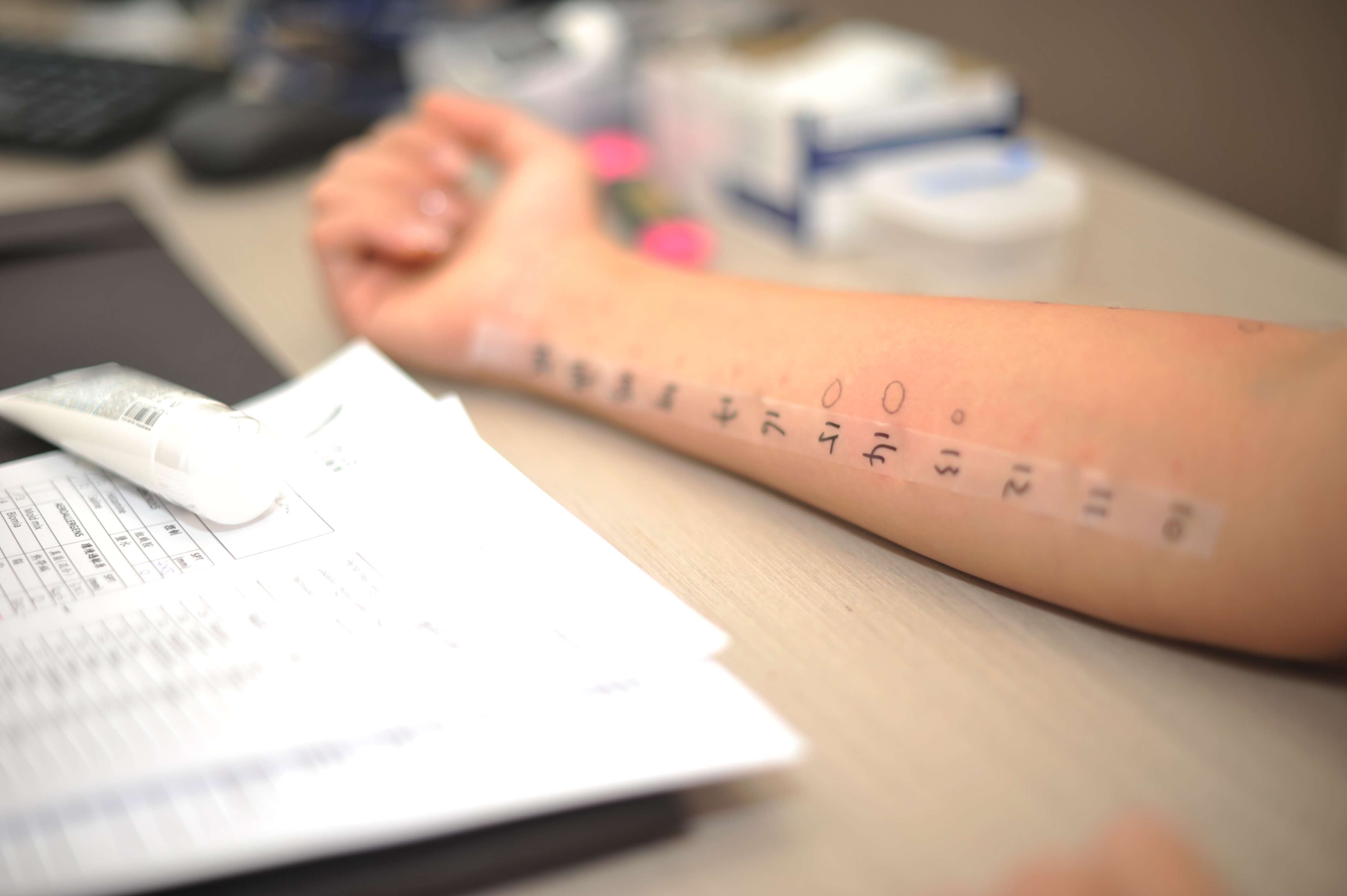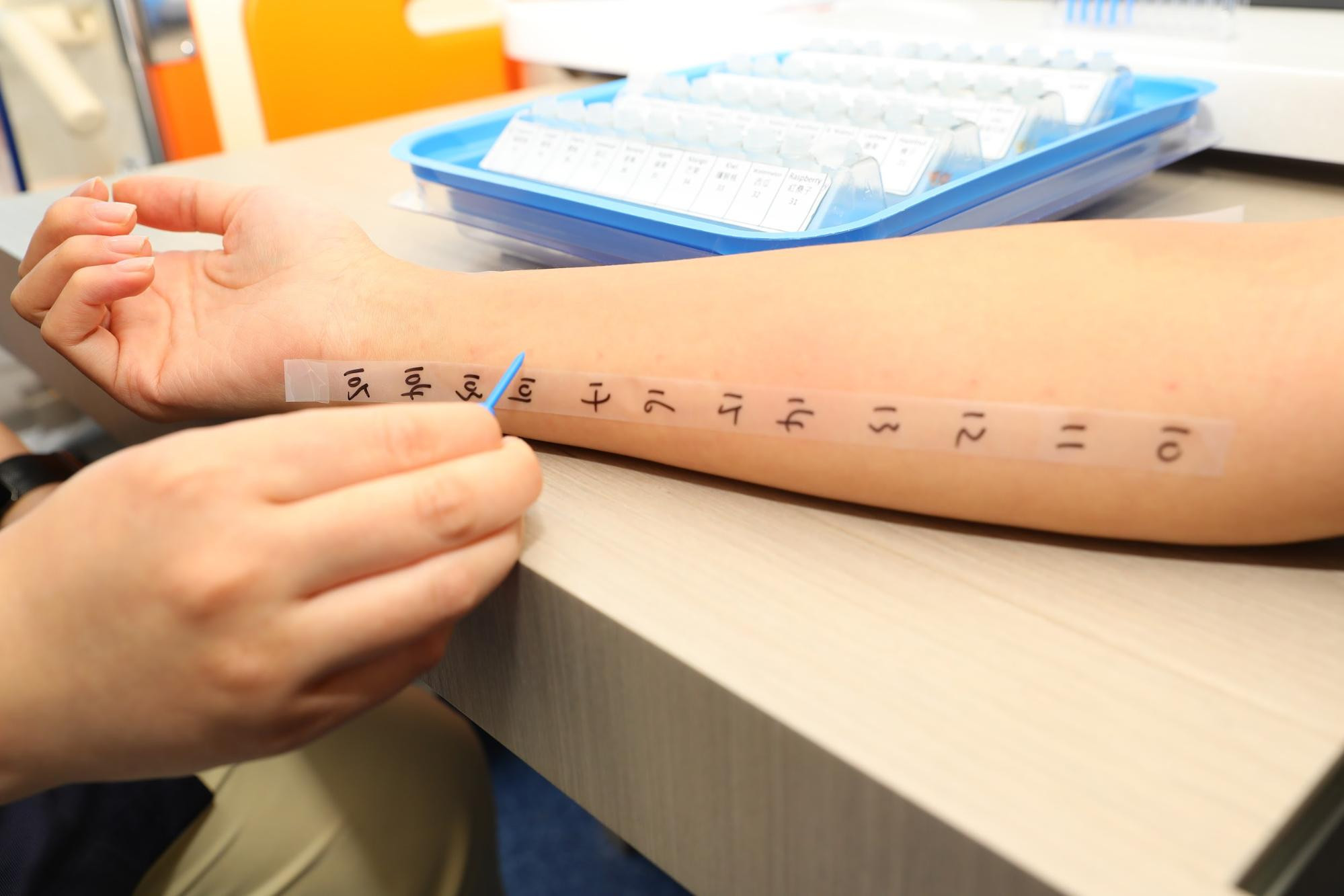Skin Prick Test

About the skin prick test
Skin prick test is a common diagnostic method to assess a patient’s allergic reactions to specific allergens. The procedure involves pricking the patient’s skin with a small amount of allergen and observing for any resulting allergic reaction. Skin prick test is a simple, safe, and fast allergy test that can quickly indicate allergic reactions to specific allergens. It can be performed on individuals of all ages, including infants, children, and adults.
During skin prick tests, healthcare professionals will mark multiple test points on the patient’s skin, each representing a specific allergen. Then, using a fine needle, they gently prick the skin's surface to introduce a tiny amount of the allergen. If a patient shows a positive reaction to a specific allergen, the corresponding skin area will develop redness and swelling within 15-0 minutes. The larger the area of redness and swelling, the higher the likelihood of the patient being allergic to that allergen. If necessary, the doctor may arrange for additional blood tests.
A skin prick test is typically performed on the patient's inner forearm or back. However, the test is often conducted on the back for infants with limited arm space. For patients with eczema, the testing is performed on unaffected skin. In most cases, the skin prick test is painless or may cause only mild discomfort.
Which allergens can be detected through a skin prick test?
The doctor will first inquire about the patient's history of allergies and then select allergens that have the potential to trigger allergic reactions for testing. The specific types and number of allergens tested during each session may vary depending on the patient's circumstances, ranging from a few to several dozen. The testing typically includes common food allergens such as milk, eggs, peanuts, tree nuts, wheat, soy, fish, and shellfish, as well as environmental allergens such as dust mites, animal dander, cockroaches, mould, and pollen.
Who is suitable for the skin prick test?
Individuals who have immediate family members, such as parents or siblings with allergies or those who have a personal history of sensitivity conditions (such as nasal allergies, asthma, allergic conjunctivitis , urticaria, eczema food allergies, or hay fever) are appropriate candidates for this test. It can aid in the early identification of allergens, help control symptoms, and, if needed, guide desensitisation treatment.
Who is not suitable for skin prick testing?
Individuals with extensive skin inflammation, such as severe eczema patients, those currently taking antihistamine medications or pregnant women, are not recommended to undergo skin prick testing. Patients may consider alternative options like an IgE blood test in such cases. It is advisable to consult with healthcare professionals for further guidance.
Preparation before skin prick testing
- 1-2 weeks prior: Discontinue using steroid-containing topical creams on the testing area.
- 5 days prior: Stop taking long-acting antihistamine medications.
- 48 hours prior: Stop taking fast-acting antihistamine medications.
The steps of the skin prick test
- The healthcare professional will begin by cleaning the skin in the area where the allergy test will be performed and mark it accordingly.
- They will place a drop of concentrated allergen extract on the marked area of the skin.
- They gently prick or puncture the skin at the marked spot using a small needle or a pointed device.
- Wait quietly for 10-15 minutes.
- If the patient is allergic to a particular allergen, the skin in that area may feel itchy, show redness, mild swelling, or develop raised bumps within a few minutes. It is important to leave the area intact during this time.


Post-test precautions
- After the test, the skin may exhibit temporary redness, swelling, and itching, which generally subsides within a few hours. In some cases, these reactions may appear a few hours after the test, but they should still resolve within one or two days. Patients should keep their skin clean and dry at all times.
- Severe allergic reactions caused by the allergy test are very rare. However, suppose a patient experiences severe allergic reactions after the test, such as fever, worsening skin redness or swelling, shortness of breath, or difficulty breathing. In that case, they should immediately contact their primary healthcare provider.